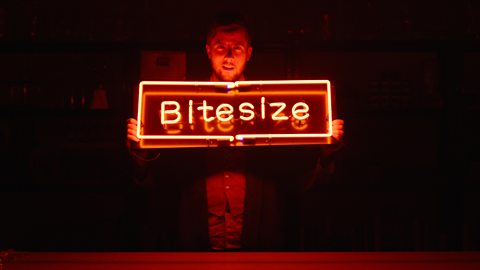Investigating the I-V characteristics of electrical components
Speaker one Have you ever wondered how some of our devices can charge so quickly? Understanding the characteristics of electrical components is crucial to designing devices that can charge our phones safely and speedily.
Speaker two Well, we can understand the behaviour of components through their current-voltage or I-V characteristics. These are usually displayed as a graph.
Speaker one There are three components that we need to generate I-V characteristics for. These are: a resistor, a filament bulb and a diode. For this experiment you will need the following equipment.
Please pause the video to take a closer look.
These components may get hot while you’re using them so switch off the circuit when not taking readings to avoid injury and limit the current to the lamp. First we’re going to build a circuit to test the resistor. We’ll follow the circuit diagram carefully starting from the positive side of the battery. Once complete, we’ll add the voltmeter.
Speaker two Okay, remember that an ammeter is always connected in series in a circuit. This measures the current. However, a voltmeter should always be connected in parallel because this measures the potential difference across the component being tested.
Speaker one By changing the resistance of the variable resistor, we vary the potential difference supplied to our component. Let’s start with a value of zero ohms. We can then take our first voltmeter and ammeter readings, which we will add to our table of results.
Speaker two We’ll then alter our variable resistor setting four more times, which will give us 4 additional values of potential difference and current.
Speaker one An I-V characteristic curve should also include negative values. This is where the potential difference is supplied to the components in the opposite direction. We just need to swap over connections to the battery and repeat the entire experiment.
Speaker two We can now plot our I-V characteristic graph. We’re plotting potential difference on the x-axis and current on the y-axis. Finally, we can test our other components. Simply disconnect the resistor and replace with the next component to be tested.
Speaker one So now we’ll test our final component, which is the diode.
Speaker two OK, but there are two things there.
Speaker one Yes. So, because of the diode, we need a protective resistor.
Speaker two OK.
Speaker one So I’ll put that in place first. Also, because the current through this circuit is quite small, we’re going to replace this ammeter with a more sensitive one.
Speaker two OK.
Speaker one So take that one out.
Speaker one And that goes there.
Speaker two OK.
Speaker one And then now I’m going to replace the light bulb with a diode.
Speaker two OK. We then repeat the steps we followed for the resistor.
Speaker one Once we’ve collected the data for all three components our I-V characteristic graphs should appear as follows.
A resistor gives a straight-line graph that runs right through the origin, showing that the current is directly proportional to the potential difference.
Speaker two Now, a filament bulb increases in resistance as the current increases. As the potential difference increases, the current does increase, but at an ever decreasing rate. Both of these components behave in the same way regardless of which way the current is flowing.
However, a diode gives a very different I-V characteristic because when it’s connected in a forward direction a certain level of potential difference is required to cause a current to flow. Above this value, the resistance decreases significantly, so current increases rapidly with potential difference. However, when connected to a reverse potential difference, no current flows at all. The resistance is infinite in the reverse direction.
Speaker one Circuit designers use I-V characteristics to help select the most appropriate electrical component for when designing a circuit to, for instance, charge your mobile phone quickly and safely.
Description
A presenter-led live action science video investigating I-V characteristics of electrical components, with Dr Maggie Aderin-Pocock and Dr Alex Lathbridge.
Electric circuits
Now playing video 4 of 4
- 3:57

- 2 of 4
3:25
- 2:44
